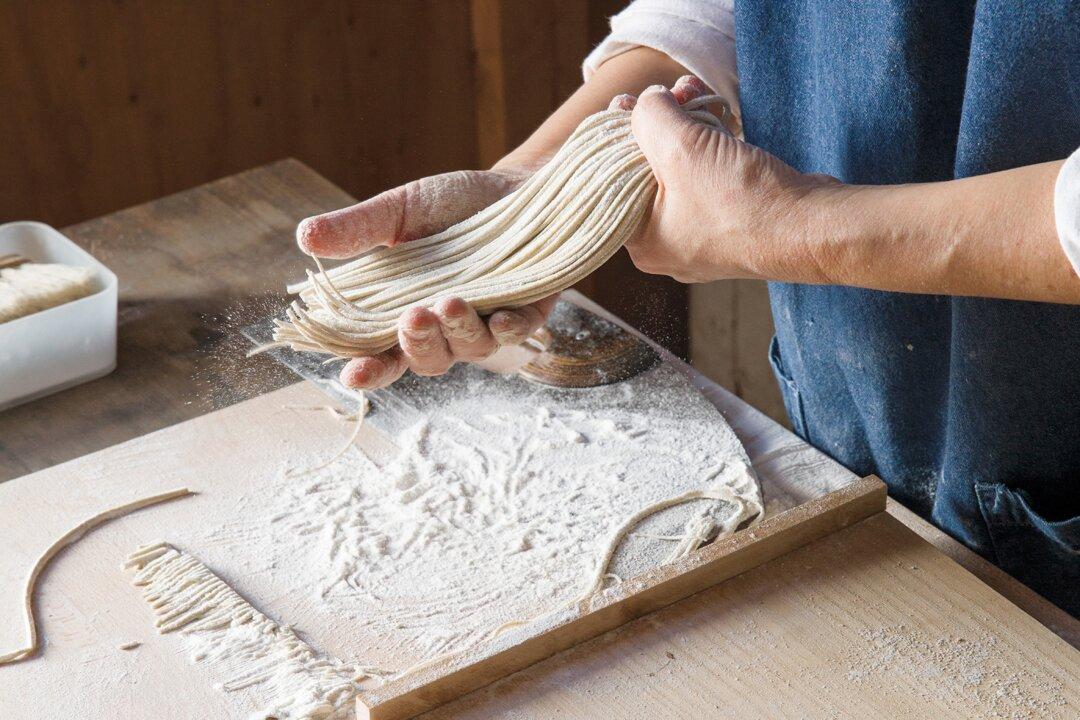Soba Noodles
Soba noodles are made with buckwheat flour and water, to which wheat flour can be added as a binder. This nihachi-style soba recipe uses 80 percent buckwheat flour and 20 percent wheat flour. It is a classic blend that works beautifully. The wheat acts as a binding agent and provides a good chew, while the buckwheat gives it the hauntingly nutty fragrance. You can make soba with 100 percent sobakoh (buckwheat flour), if the buckwheat is fresh and very slowly milled in a stone mill.Japanese artisan buckwheat miller Yoshitomo Arakawa has dedicated more than 30 years of his life to milling buckwheat flour. He directs the operation of more than 100 stone mills, each producing as little as five pounds per hour—very slow compared to the stone mills in the United States that mill grains more than 10 times that speed. But this slow milling is a gentle process that ensures freshness and good flavor. Since buckwheat is grown in this country and there is a growing demand for good soba noodles, I hope to see a market for that kind of flour in the near future.






